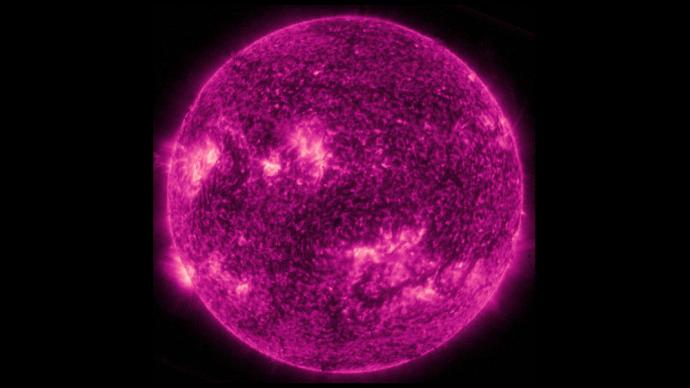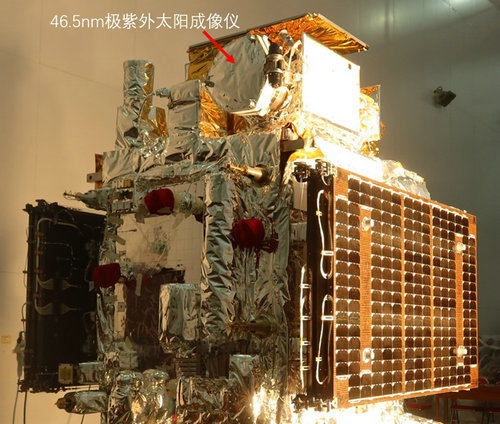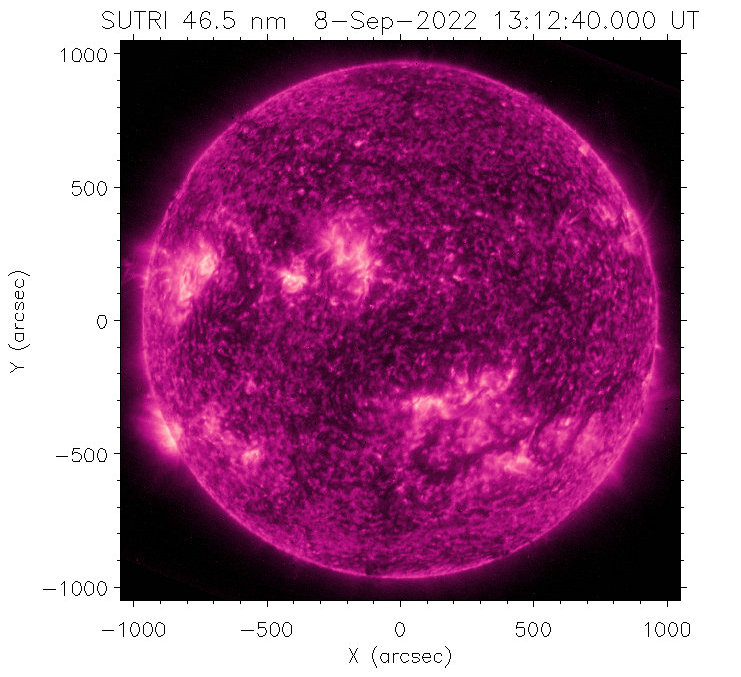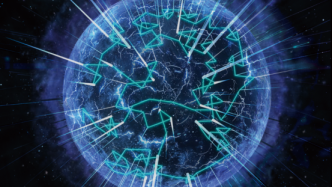
Recently, the 46.5nm extreme ultraviolet solar imager (English name Solar Upper Transition Region Imager, referred to as SUTRI, Figure 1) carried on the Chinese Academy of Sciences Space New Technology Experiment Satellite (SATech-01) successfully started up, and successfully obtained the first batch of solar transition regions (Solar Upper Transition Region Imager). The layer between the chromosphere and the corona) dynamic imaging observation data, and captured some recent activities on the sun (Fig. 2). This is the first time that my country has carried out the detection of the solar transition zone. At present, the payload is functioning normally, and on-orbit testing and calibration are being carried out as planned. SATech-01 is the first satellite of the space new technology test satellite series developed by the Institute of Microsatellite Innovation, Chinese Academy of Sciences. On July 27, 2022, the "Lijian-1" carrier rocket was successfully launched to the vicinity of 500 kilometers at the Jiuquan Satellite Launch Center. sun-synchronous orbit.
SUTRI is jointly organized by the Huairou Solar Observation Base of the National Astronomical Observatory of the Chinese Academy of Sciences, the School of Earth and Space Sciences of Peking University, the Institute of Precision Optical Engineering and Technology of Tongji University, the Lunar and Deep Space Exploration Technology Research Office of the Xi'an Institute of Optics and Fine Mechanics of the Chinese Academy of Sciences, and the Institute of Microsatellite Innovation of the Chinese Academy of Sciences. The Satellite General Research Institute was jointly developed with self-financing funds for one and a half years.
The Ne VII 46.5 nm line selected by SUTRI is formed in a region of about 500,000 degrees in the Sun's atmosphere (located in the high transition region), a key region connecting the lower atmosphere and the corona, and was poorly understood in the past. SUTRI is the world's first 46.5 nm solar imager based on the multi-film narrow-band filter technology. This observation is also following the seamless spectrometer on the US Skylab (Skylab) in 1973. defects like aliasing), humans have taken a full image of the Sun at 46.5 nm for the first time in nearly half a century. The project team innovatively used the silicon scandium multilayer film to obtain a 3nm bandwidth near the wavelength of 46.5 nm, and developed a scientific-grade sCMOS camera for space extreme ultraviolet detection for the first time in China, which has the ability to detect the solar atmosphere of about 500,000 degrees. The ability to make dynamic imaging observations. The captured images clearly show the network organization of the transition zone, the coronal loop system of the active zone, prominences and filaments and other structures. Observational signatures of these structures suggest that the SUTRI images are indeed structures transitioning from the lower atmosphere of the Sun to the corona, as expected (Fig. 2).
SUTRI is one of the solar exploration payloads condensed with the support of the Chinese Academy of Sciences Space Science Pilot Phase II special pre-research project-Solar Transition Area Satellite Exploration Program. SUTRI has successfully obtained a high-quality all-solar EUV solar image, which indicates that the main new technology verification goals such as the new narrow-band reflective film and sCMOS camera identified by the project team have been achieved. In the follow-up, the project team will further optimize the observation configuration, carry out various calibration work, and carry out solar physics research and space weather forecasting services through the obtained scientific data.
This successful carrying test has laid a solid foundation for the solar extreme ultraviolet spectral detection, stellar extreme ultraviolet photometry and spectral detection that the project team is promoting, and strengthened technical reserves for my country's future deep space solar exploration. Monitoring and forecasting space weather based on autonomous data have provided important support for the construction of the Key Laboratory of Solar Activity and Space Weather.

Figure 1: Image of the 46.5 nm Extreme Ultraviolet Solar Imager (arrow) on the satellite platform

Figure 2: Image of the 46.5 nm Sun observed on September 8
